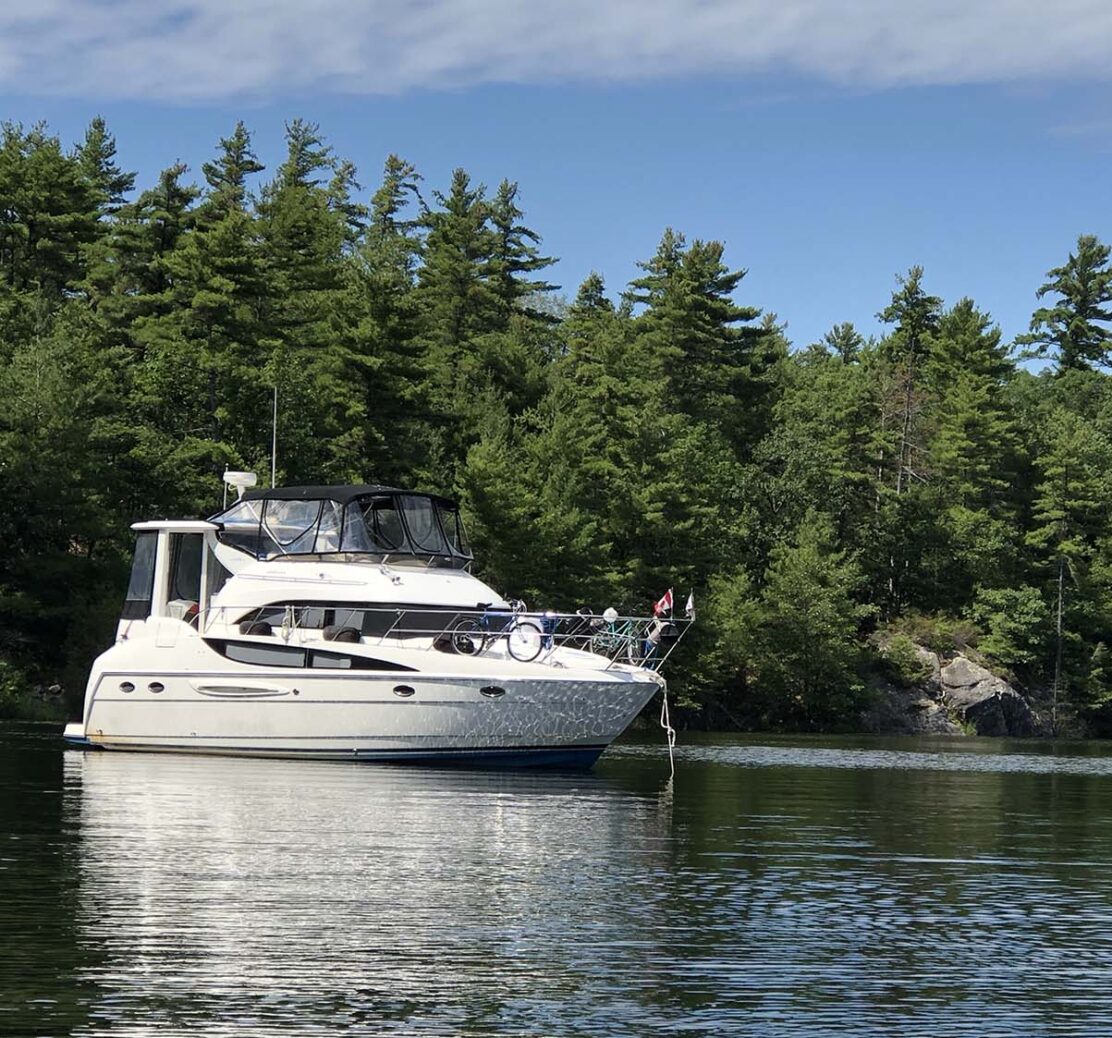On Sunday, we started on our last stretch of the Illinois River. At Mile Marker 80, we passed BY the LaGrange Lock and Wicket Dam. This was different from other locks we had ENTERED. A Wicket dam is best explained as a wall that can fall back or be raised to control water flow. Picture a door – laying on its long side — that can lay flat or be raised on the long side to resemble a wall. At normal river levels, the wall is in the UP position and boats enter the lock next to it to be raised or lowered to the water level on the other side of the lock. This is usually not a large difference – just a few feet. When the river level is higher than usual, and higher than the top of the wall, then the wall is lowered DOWN flat and boat traffic rides over it, bypassing the lock. The river levels have been high along our whole trip. We actually traveled over several wicket dams along the way.

Wicket wall in UP position.
from marionky.biz
Wickett wall in DOWN position.
from Atlas Obscura
At 9:56 AM we passed under the Norfolk & Western Railroad Bridge. This is the most western point of the Great Loop – another milestone!
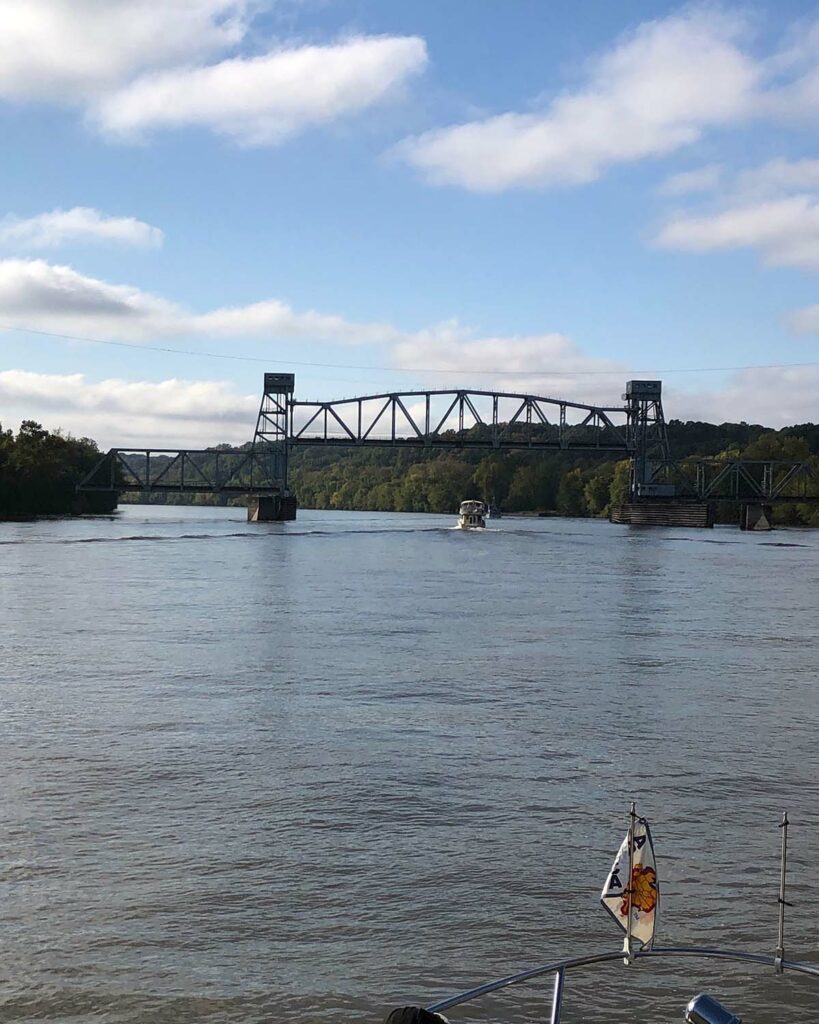
Approaching the western most point of America’s Great Loop.
At mile 0.7 on the Illinois River, we got to Grafton Marina. A few of the Two-pers were staying here and some went farther to another marina. There seemed to be a party going on in the marina and a nearby bar – sunshine, music and beer! We got our slip assignment, and as we backed in to the slip, we got applause from people on the boat in the next slip. Always makes us feel good when we can make it look easy!
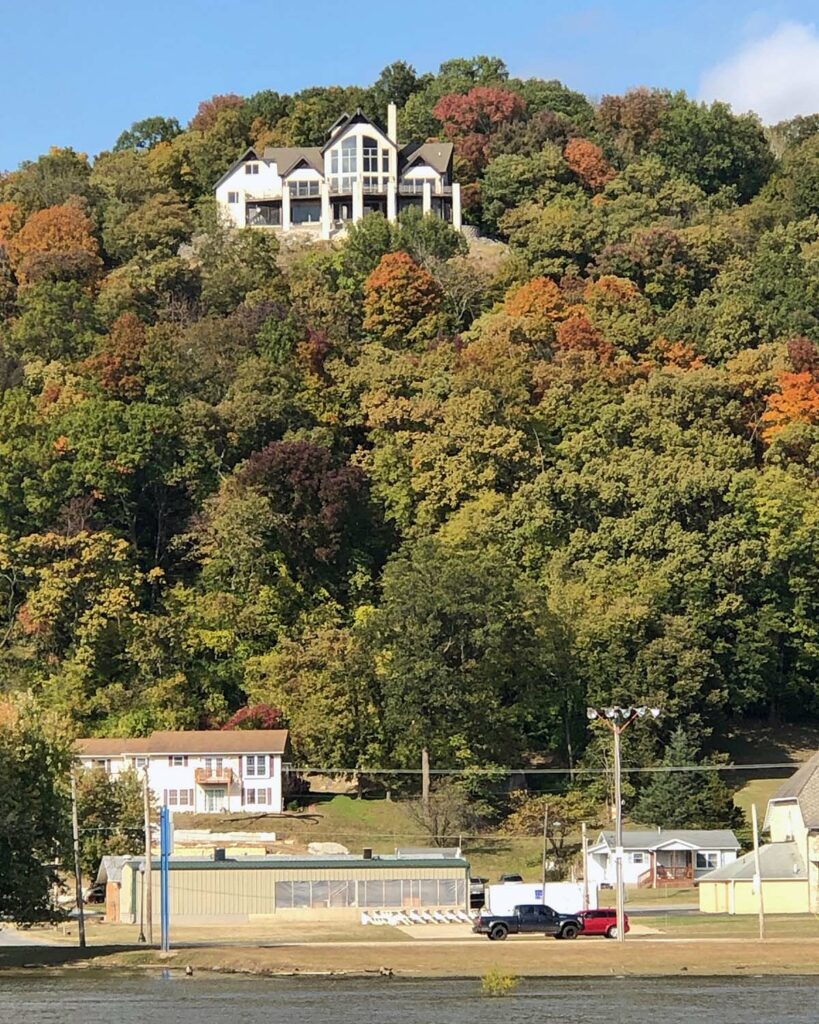
B&B on Grafton hillside. 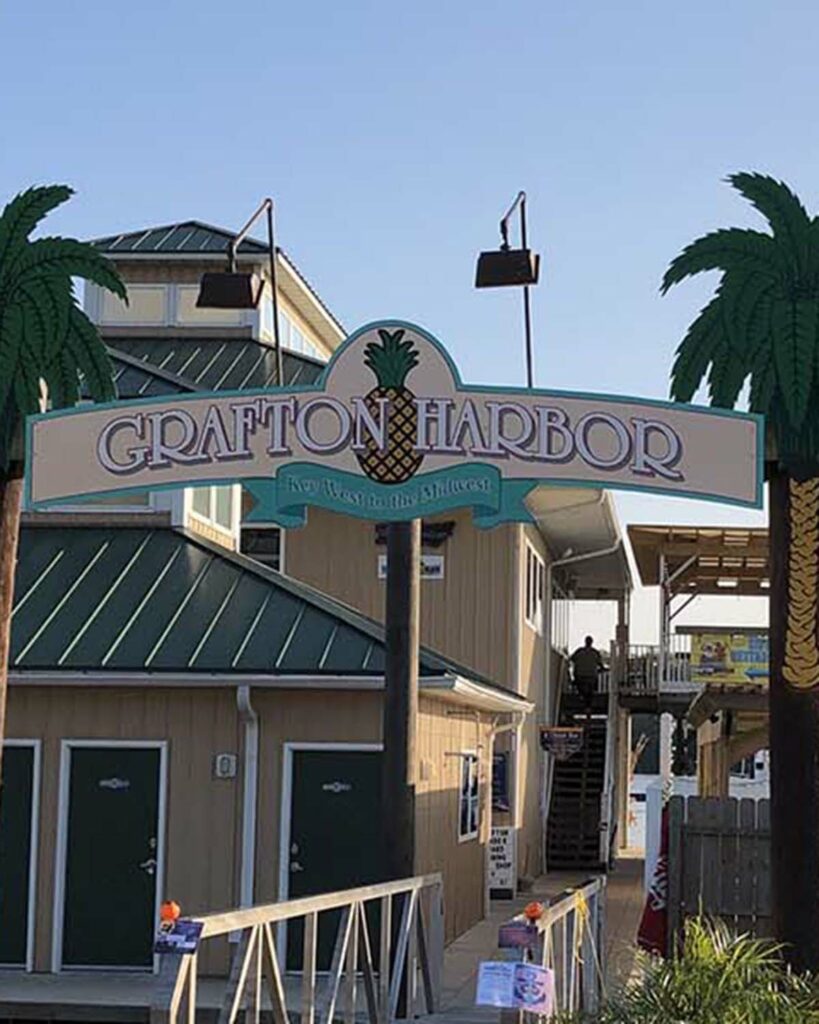
Welcome to the marina!
We headed to the outdoor bar to check out the party. It was warm, people were all over the outside area, and there was a band playing. I don’t think we had heard beach music since we left the Carolinas. They actually played a few beach songs and Ed and I just HAD to dance. Then they started playing some other stuff that was just LOUD. Time to move on. Walked up and down the main street to see all the charming shops, restaurants and beer pubs. Helped a lady put some things in her car – Ed (surprise, surprise) started up a conversation with her and turns out she’s the wife of the chief of police. She told him if he got into any trouble just mention her name. Huh – don’t know if that would help or hurt!
The next day we rented a car and Patty and Todd (Alcyone) went with us to St. Charles, a small town west of St Louis. It had such an ol’ timey charm with cobblestone streets, gaslights, and pretty storefronts that were all decorated for Halloween. This was the home of Daniel Boone, the origin of the Lewis and Clark Expedition, and Missouri’s first State Capitol. We went to the Lewis and Clark Boat House and Museum and had an in-depth history lesson on the Expedition. There were replicas of the boats used on the trip. Something that never occurred to me was that the boats had to go UP river for a long distance. They didn’t have motors, so people had to walk IN the river in order to PULL the boats. It probably took them a week or more to go the distance we go in a day! Spent the day there, had dinner and drove back. The drive wouldn’t have been so long if one of the ferries had been in operation. The high rivers were preventing the ferry from operating. We could have taken it RIGHT INTO Grafton.

St. Charles charm. 
Halloween & Autumn decor.
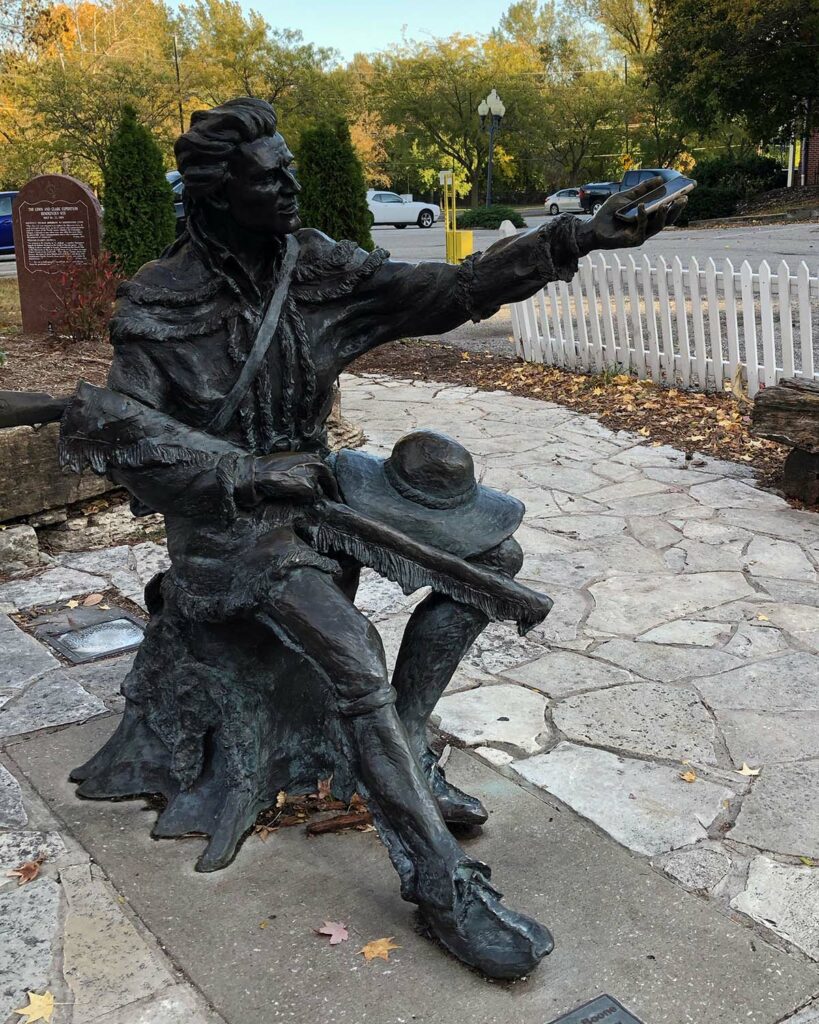
Even Daniel Boone had to search for a cell signal.

L & C Museum. 
Boat replica. 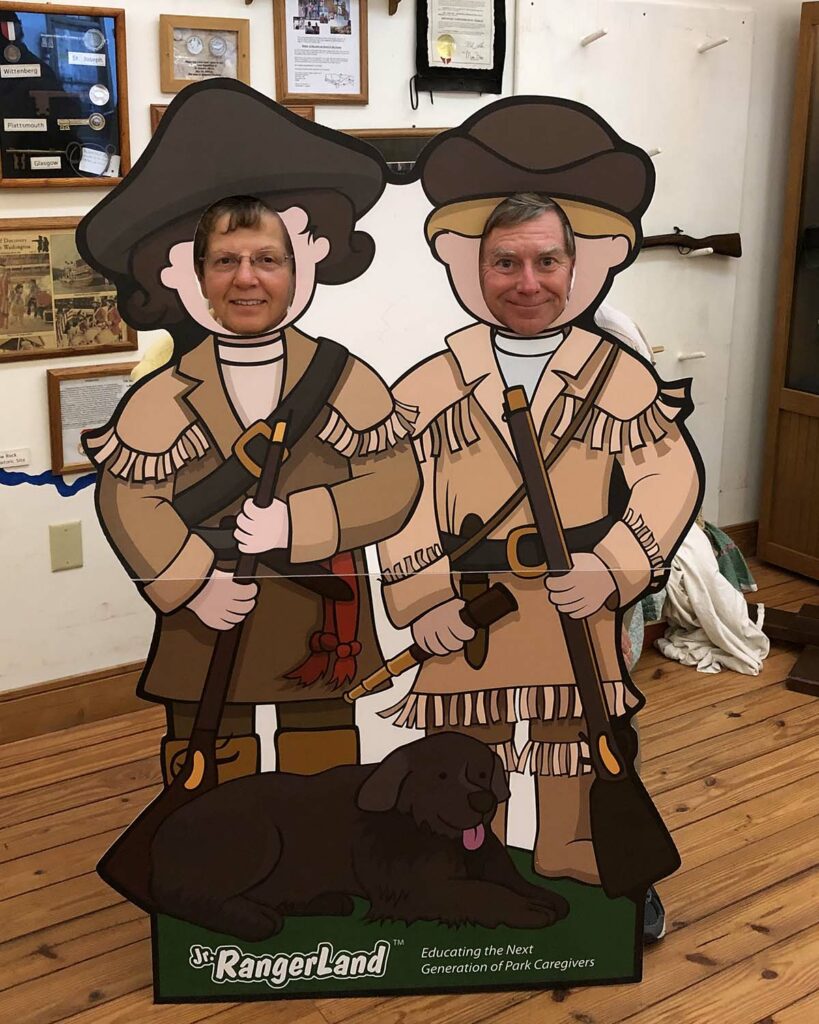
New expedition recruits.
The next day we went to see the St. Louis Arch (real name The Gateway Arch). Again, we had an in-depth lesson on the Arch, which was built as a monument to the individuals who enabled the westward expansion of the US. It was the first National Historic Site and it was to be managed by the National Park Service. A film, with actual footage of the construction, showed that it was a difficult construction project, as the individual “blocks” of the arch had to be fitted to put pressure upon one another in order to hold up the structure. The last block was the top center one. People from all over the city came out to view the placement of this last block. Would it fit? It did, and the outer construction was completed. INSIDE the Arch, a tram car system was constructed to take visitors to the top of the Arch, which is just what we did. At the top are windows to look out all over the city. The floor is actually curved, just as it would appear to be from the outside.

A beautiful day under The Arch.

Inside the tram to go to the TOP. 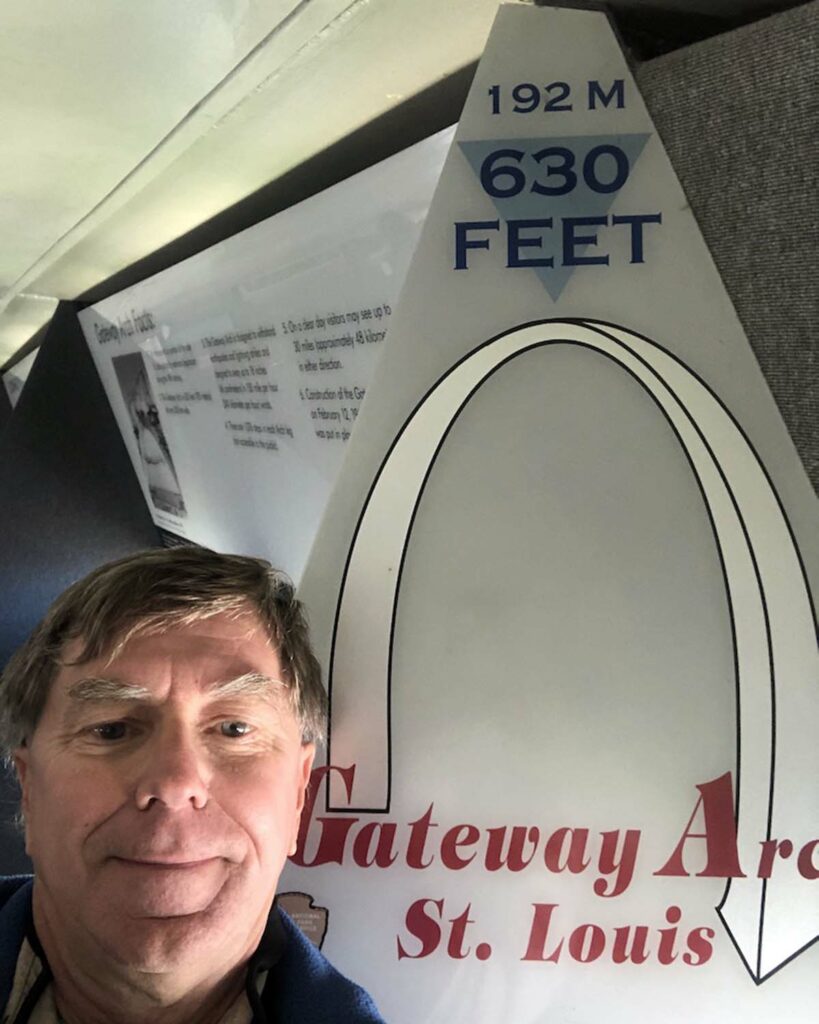
“Selfie” at 630 ft.
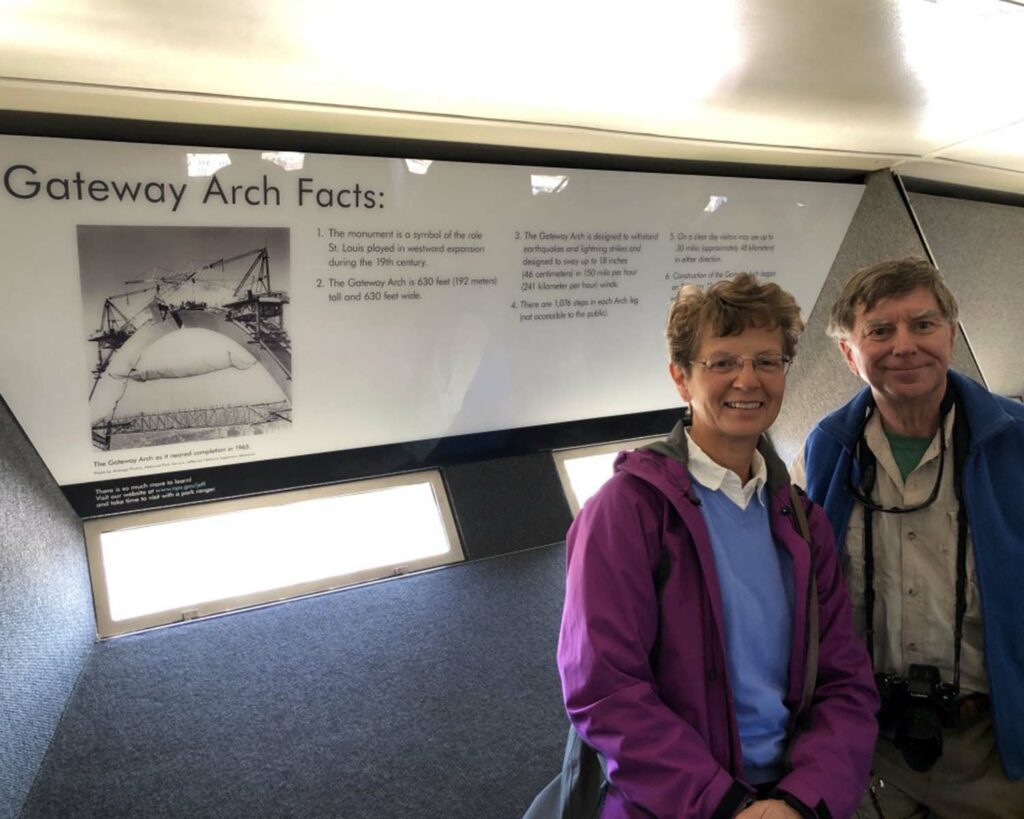
Inside the top of The Arch.
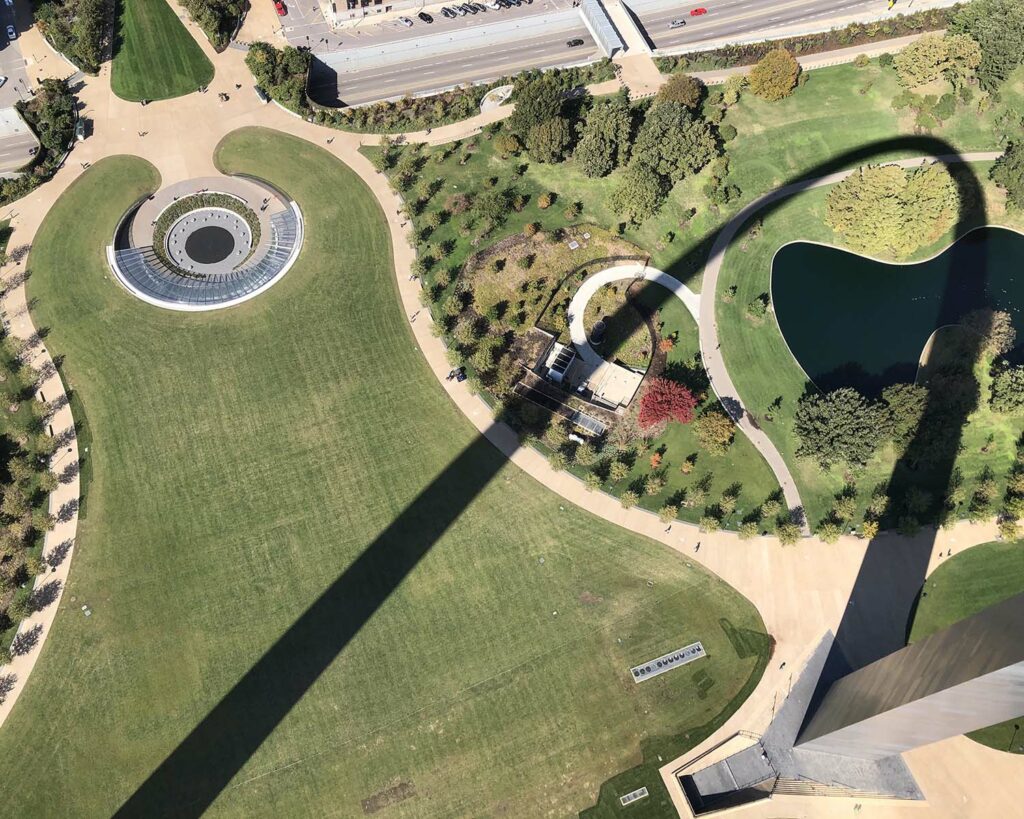
The Arch casts a BIG shadow. 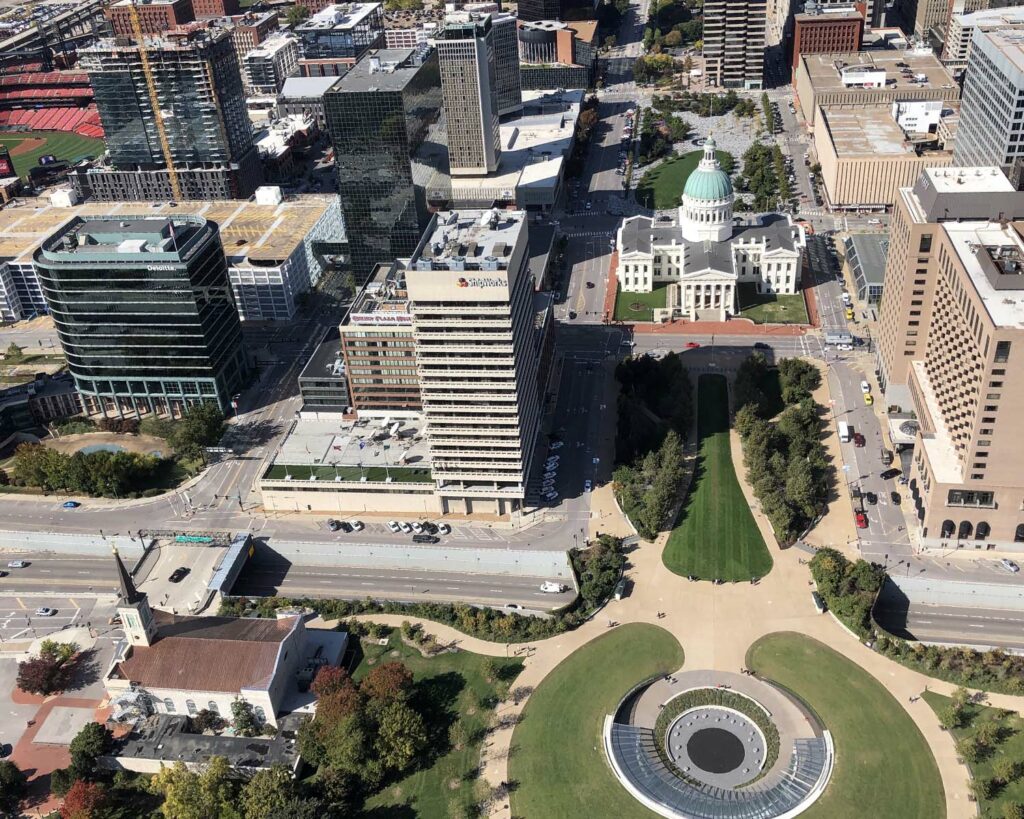
View from The Arch windows.
As we left the grounds of The Arch, we stopped at the Basilica of St. Louis, King, often called “The Old Cathedral,” one of the oldest remaining buildings in St. Louis. It is the fourth Catholic Church to be built at that site. The first church was built in 1764. This church was dedicated in 1834. It is a beautiful church that was almost lost when the plan for The Arch was created. Almost 40 blocks of St. Louis, much in decay, were torn down to make way for the creation of The Arch. The mayor, who presented the plan, had been married in this very church. Perhaps that played a part in its survival. Can you hear his wife saying, “You’re going to tear down WHAT?”

Interior of the Basilica of St. Louis. 
Intricate ceiling details.
After the Arch, we went to the Old St. Louis County Courthouse. It also survived the construction of the Arch and is also a beautiful building. It is always interesting to see the detail in the grandeur of old buildings. That kind of craftsmanship isn’t much evident in modern structures. There were two cases of historical note that were heard in this courthouse. The first was in 1846 when Dred Scott sued the State for his freedom and that of his wife. The Missouri Supreme Court eventually upheld the lower court decision, and the US Supreme Court also upheld the decision that the Scotts and all African Americans were not citizens, and therefore had no rights to sue. The plaque on their statue reads that this was a “defining moment in the history of the Civil Rights Movement.”
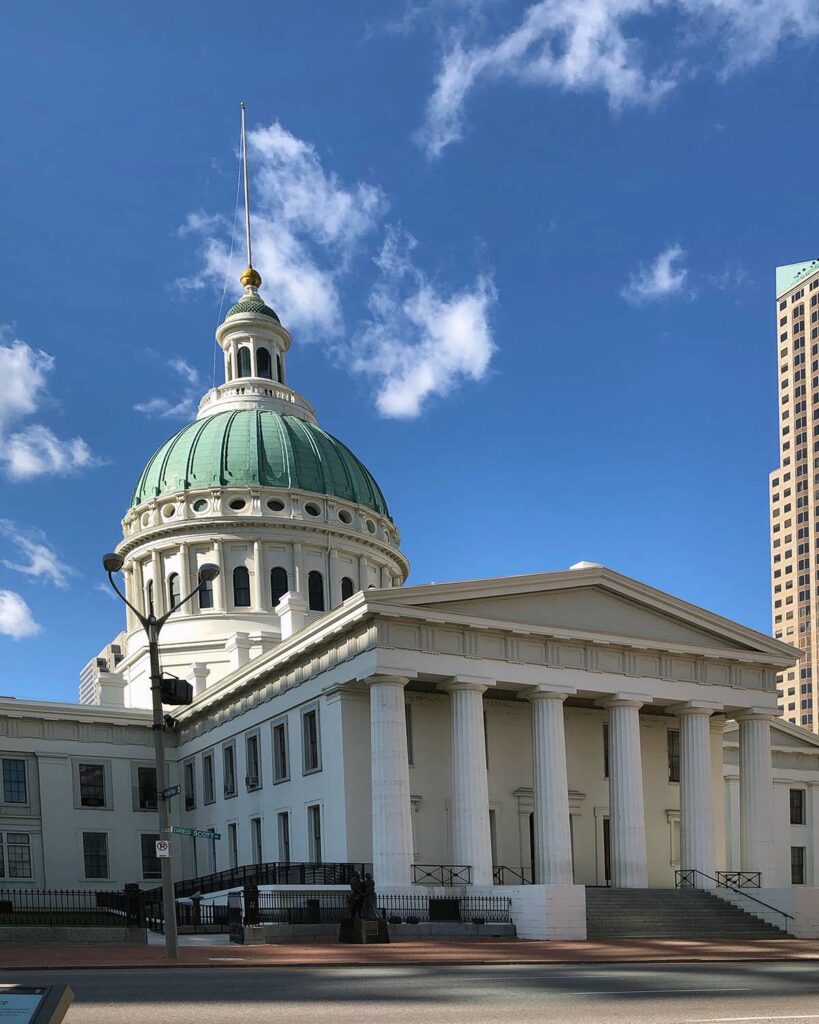
The Old Capitol Building.
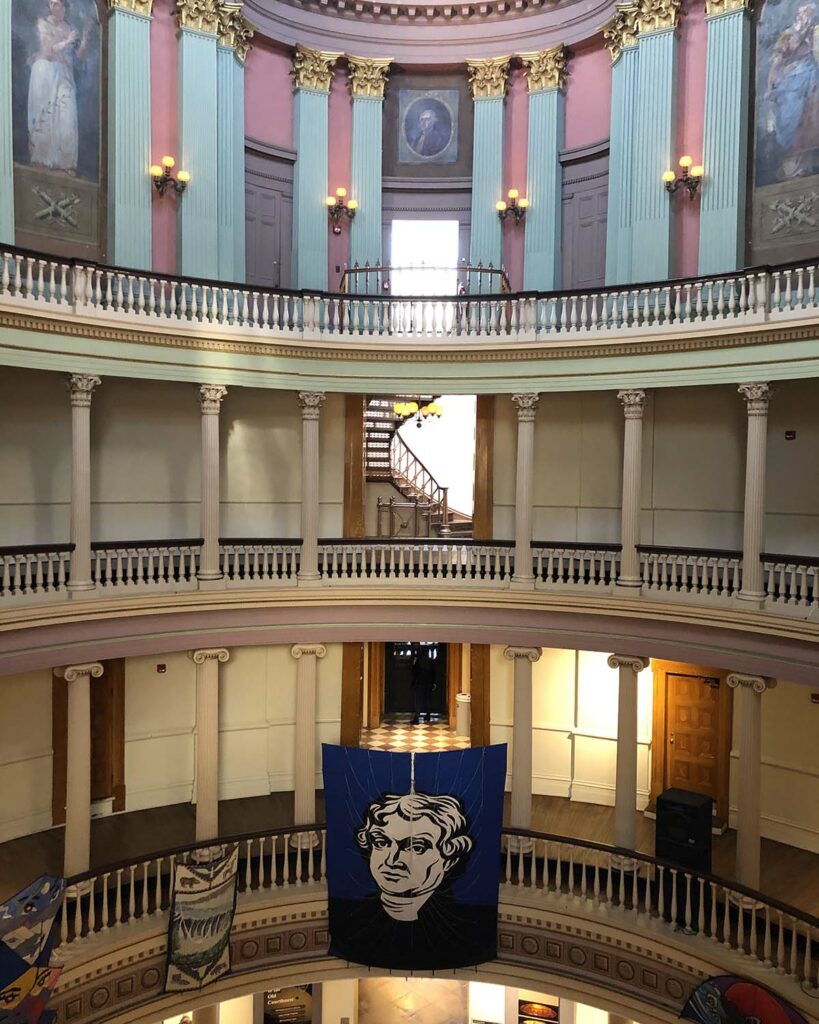
Capitol interior. 
Display of additions made over many years. 
Statue of Dred and Harriet Scott.
The second case of note was that of Virginia Minor. In 1872, she attempted to vote in a local election and was denied. This case also went to the US Supreme Court and the male-only eligible to vote law was upheld.
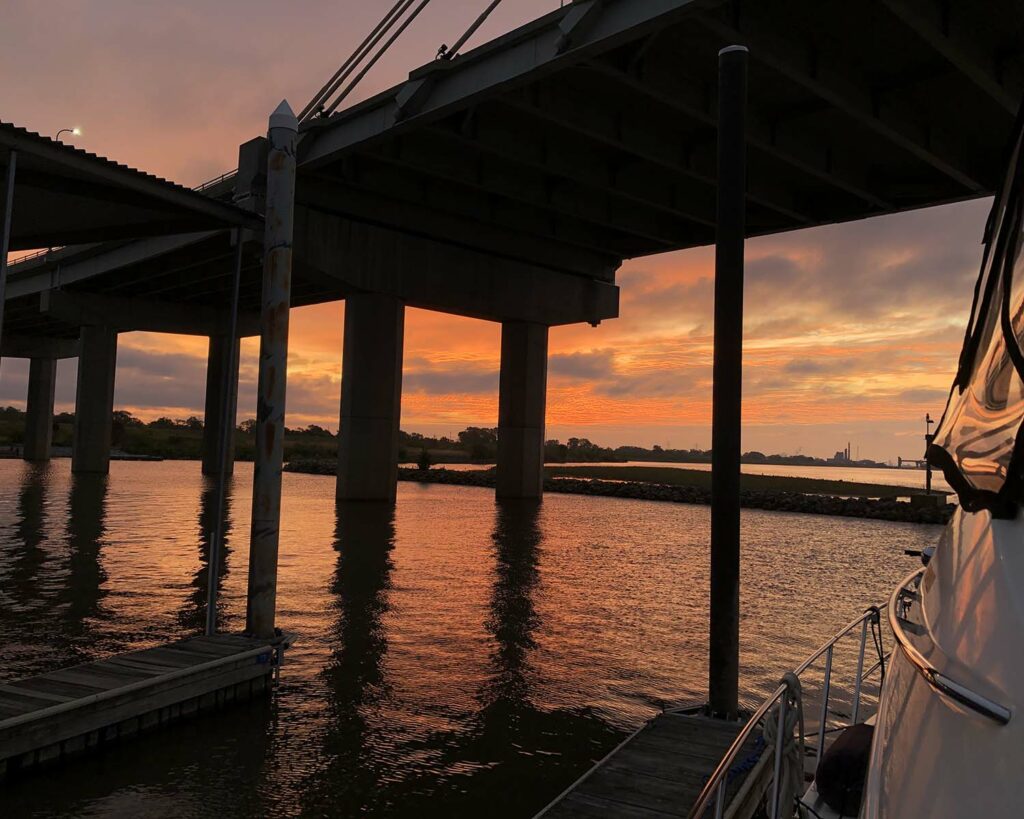
Sunset thru the bridge at Grafton Marina.
On the 23rd, we moved the boat down to the end of the Illinois River and made a turn onto the Mississippi River. This river had more current to it, and we would benefit from it for a few days. On this day, we only moved a short distance to Alton, about 16 miles away. This actually got us a little closer to St. Louis, and that afternoon we had to go make one more visit to the city – to see the Anheuser-Busch brewery, which is the world headquarters for the company. Again, the architecture of the buildings there is amazing to see and we very much enjoyed a tour – with free samples! As they say in St. Louis – “This Bud’s for You!”
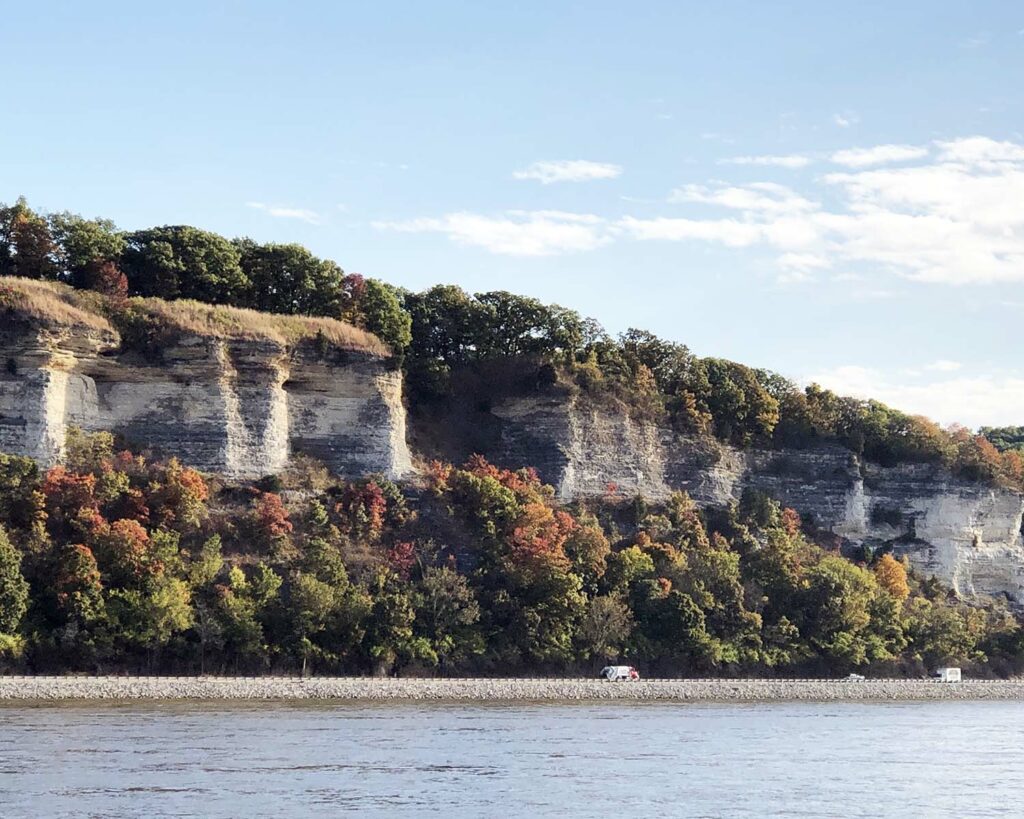
Beautiful scenery on the way to Alton. 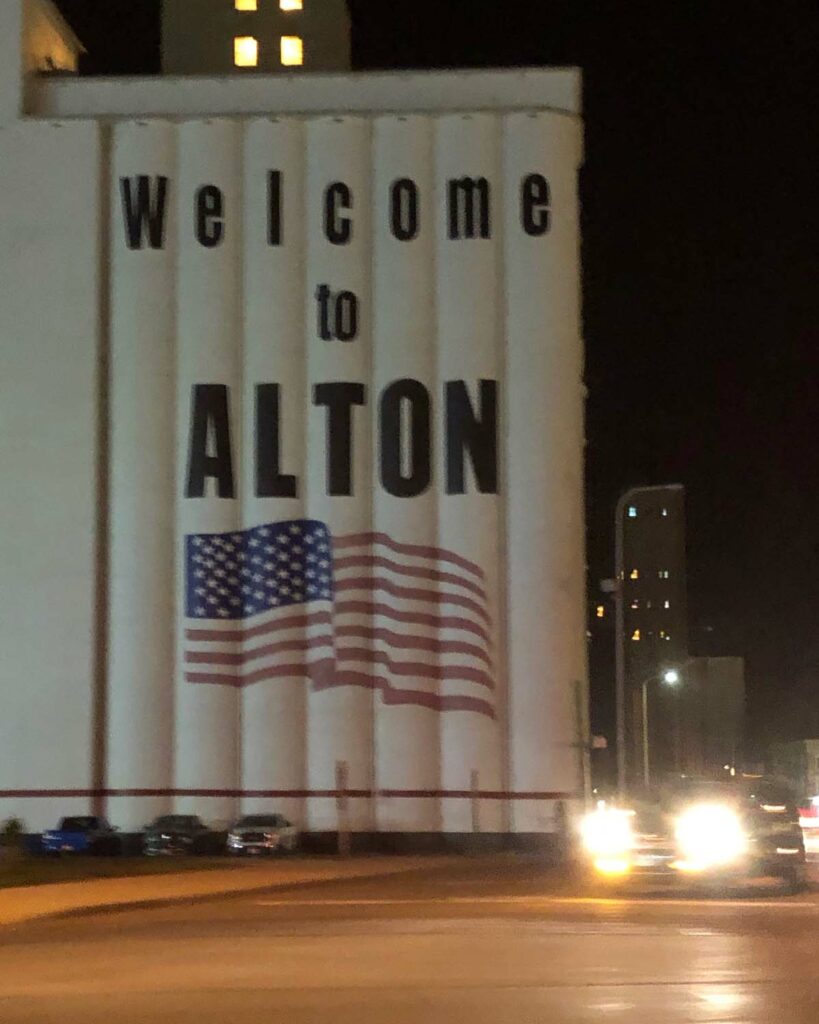
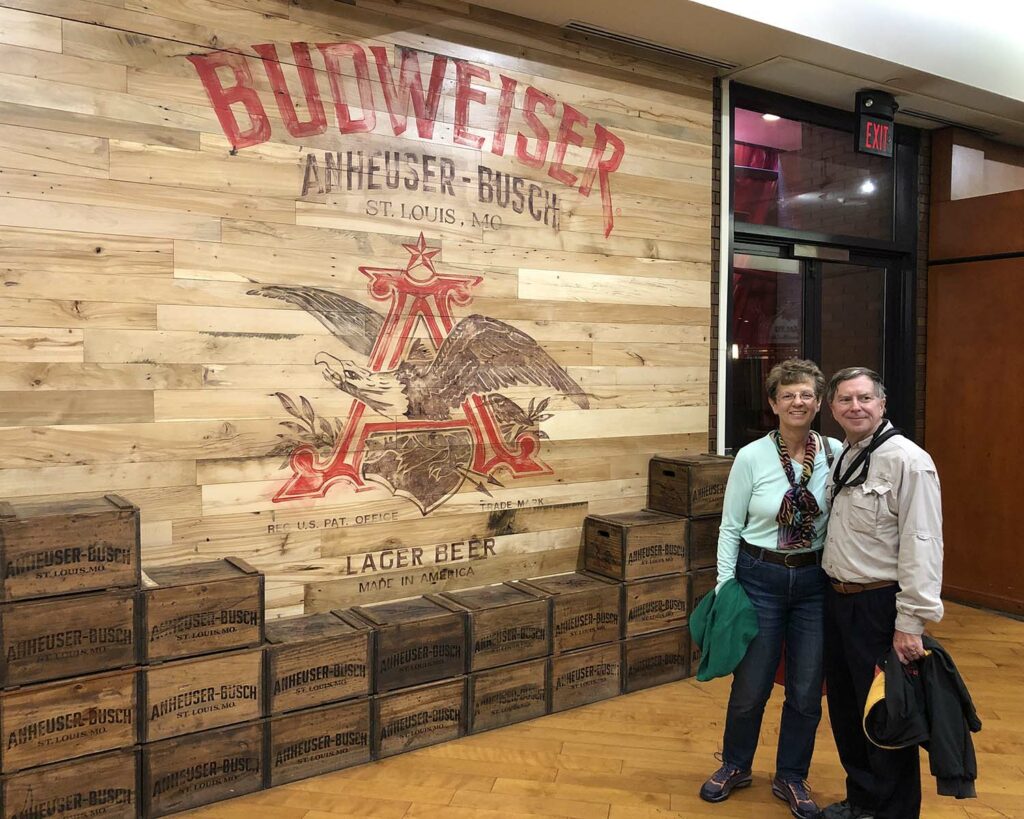
In the Beer lobby. 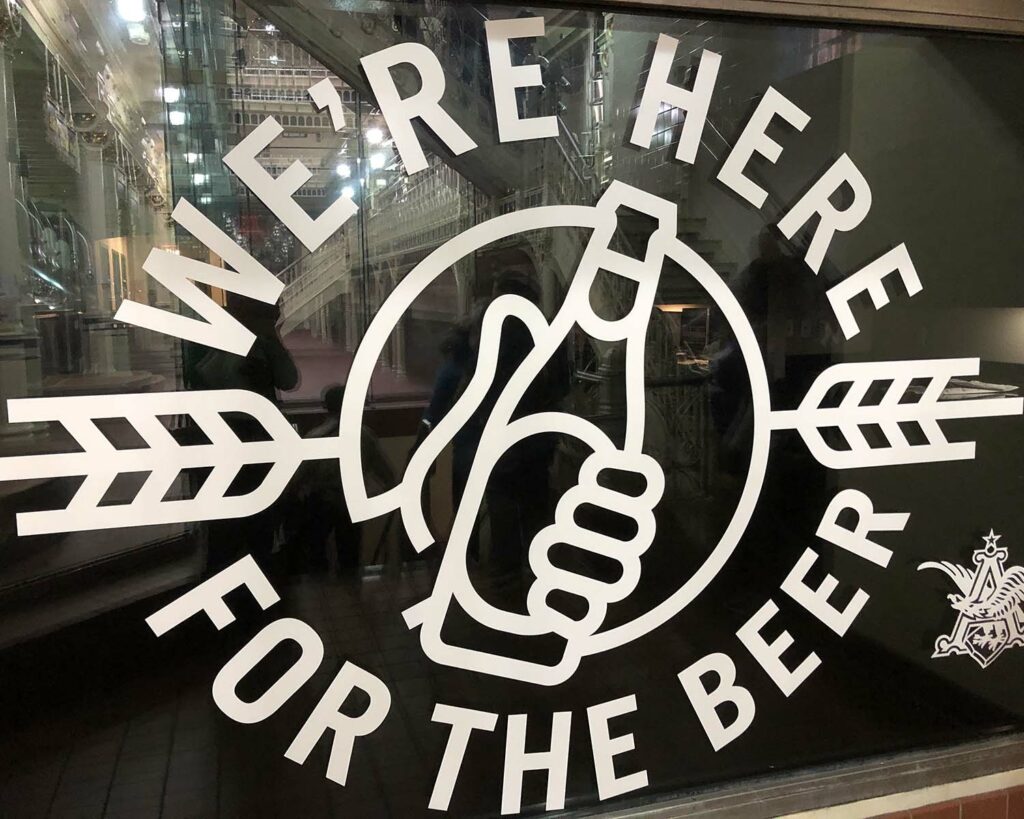
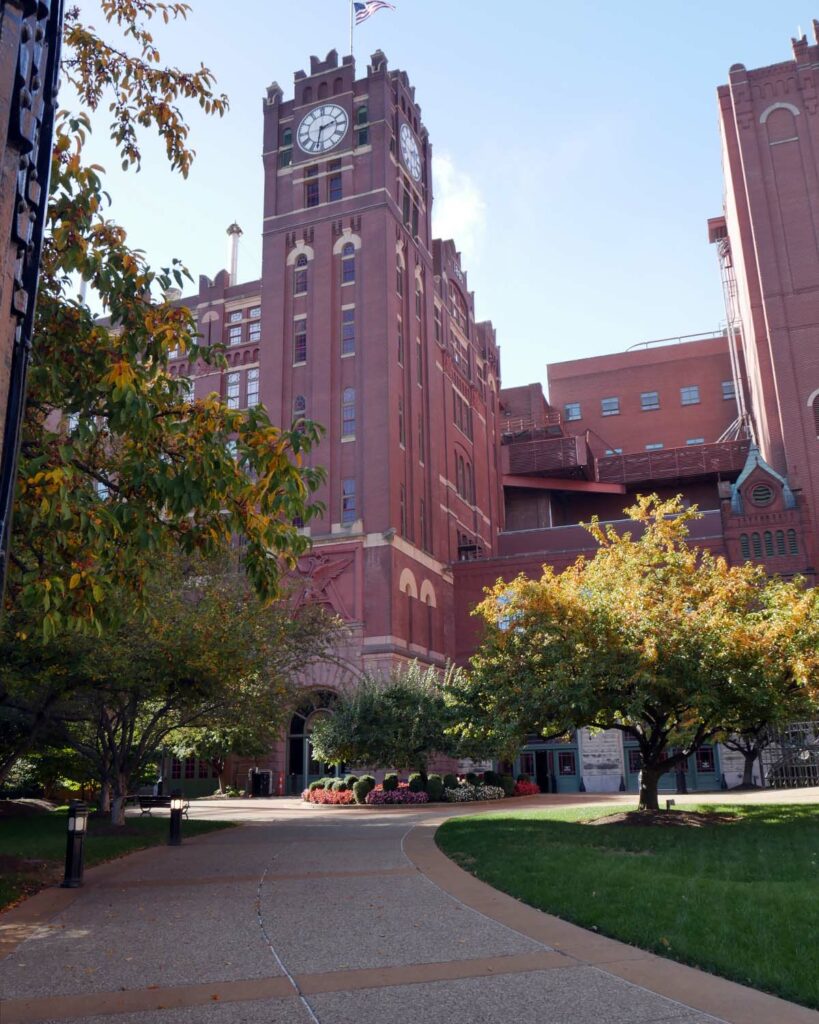
Exteriors of Anheuser-Busch buildings. 


Chandelier and intricate iron work in the Michelob Brewing Building.

Wagon in “the barn.” 
Chandelier in “the barn.” 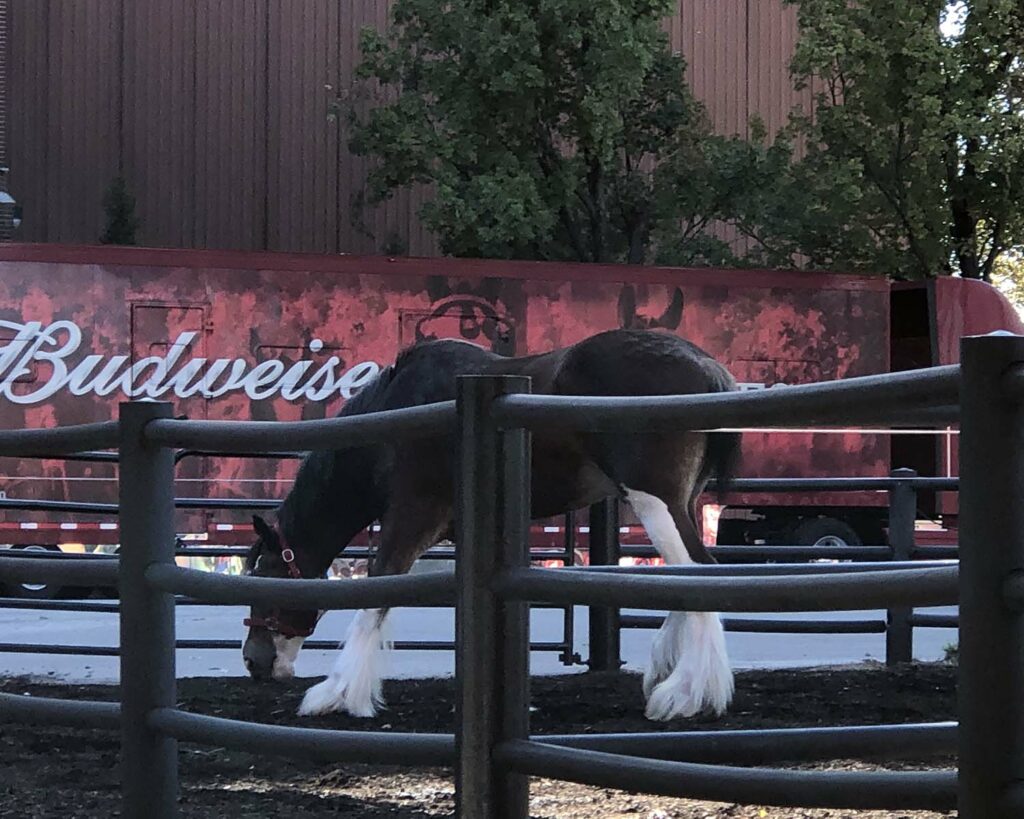
Budweiser Clydesdale.

Ed wants a beer of a size to match the chair!
